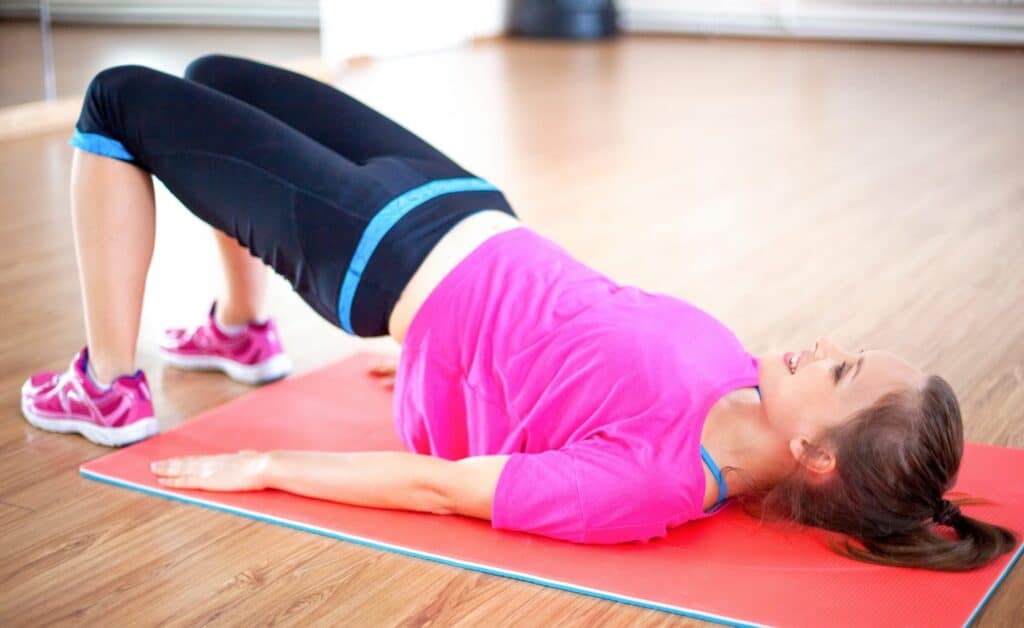Unlock the Power of Pelvic Trainers: A 2022 Guide
Pelvic floor muscle training (PFMT) exercises are a set of activities that strengthen the pelvic floor muscles, and pelvic floor trainers are tools that can help you do them! Before we get into the trainers, let’s cover some basics: What exactly is the pelvic floor? The pelvic floor is a collection of ligaments and muscles supporting the bladder, uterus (womb), and bowel. The urethra from the bladder, the vagina from the uterus, and the anus from the bowel all pass through the pelvic floor. The pelvic floor muscles connect to your pubic bone in the front and your tail bone in the back, forming the base of your pelvis. What function do the pelvic floor muscles serve? When your pelvic floor is strong, it protects your pelvic organs from problems like: incontinence (the involuntary loss of urine or feces) and prolapse (lack of support) of the bladder, uterus, and bowel. The pelvic floor muscles also aid in bladder and bowel control by allowing you to “hold on until the appropriate time and place.” What causes weakness in the pelvic floor muscle training (PFMT)? The following are some of the most common causes of pelvic floor muscle weakness: Pregnancy Childbirth can be difficult, especially after having a large baby or pushing for a long time during delivery. Being Overweight Constipation (excessive straining to empty your bowels). The heavy lifting regularly Excessive coughing Hormonal changes during menopause Aging Pelvic Floor Muscle Training Pelvic floor muscle training exercises are designed to help women strengthen the muscles beneath their uterus. It also assists men with muscle strengthening under their rectum. The pelvic floor muscles play a vital role in reducing the occurrence of fecal and urinary incontinence. PFMT can facilitate both individuals experiencing urinary leakage issues. Unfortunately, women may additionally experience a pelvic organ prolapse with weak pelvic floor muscles. Despite the benefits of pelvic floor muscle training, rehabilitation, and curing incontinence symptoms, there’s a knowledge gap about pelvic floor dysfunction among women (De Andrade et al, 2018). Pelvic Floor Trainers Pelvic floor devices assist women and men in performing pelvic floor exercises, also called Kegels. These exercises are a contraction and relaxation of the pelvic floor muscles to help strengthen them. However, it can be difficult for people to determine whether or not they are performing these exercises correctly. The best way to improve at these is to work with a pelvic floor physical therapist, and you should avoid doing them if you have any pelvic pain, pain with sex, erections, ejaculation, or other symptoms. First, you should consult with a physical therapist or urologist/gynecologist to assess whether these devices are appropriate. On the contrary, some people simply do not have access to a therapist, are uncomfortable going, or lose motivation to keep doing the exercises at home, which is where these devices can be helpful. Pelvic trainers can help you be consistent in your practice. What types of PFT are available? Biofeedback wearables and devices are inserted within the vagina like a tampon and are typically made of soft silicone. The purpose is to ensure correct pelvic floor muscle contractions during exercising. These interactive training devices connect to the mobile-based applications, assisting people to monitor and track their progress. They instruct users to push or squeeze during the exercises and remind them when it’s time to do the next workout. There are several options available, with their own functionality, unique designs, and shape. Here are some you can try: Kegel weights and Kegel balls—These are also inserted within the vagina or rectum for males and help people practice kegel exercises. When you insert it, you have to contract your pelvic floor muscles to keep it in. You can increase weights over time and it can help you strengthen the muscles like going to the gym. You only want to use them for a short period of time, don’t keep them in all day! Training Apps and Games for Pelvic Floor Training—Pelvic floor training apps can be used without the need for a wearable. These integrating apps assist with Kegels through proper guidance, while other developers have designed progressive games dedicated to Kegels to help users master their technique. How will having strong pelvic floor muscles benefit me? Building strong pelvic floor muscles will benefit you in the following ways: Prevent urinary or fecal leakage. Keep the pelvic floor organs in their proper position. Improve pelvic blood flow Potentially lead to stronger orgasms or pleasurable sex. Disadvantages It is possible that the devices are not kept in place exclusively because of contracting pelvic floor muscles (Bo, 1995). Because the vagina is not a vertical cylinder, natural pelvic tilt could aid in cone retention (Hahn, 1996) What to look for when purchasing a pelvic floor trainer? They should be made of safe, hypoallergenic materials, such as medical-grade silicone and BPA-free plastic. Some materials may be hazardous, especially during pregnancy, so consult your doctor first. Consider what is important to you and how tech-savvy you are. Consider what problem you want to fix (stress incontinence, urgency incontinence or sexual dysfunction). Does it include a bladder diary that can help you track your improvement in urinary symptoms? Does it have different protocols for different problems? Has it been created by a health professional with expertise in the area (i.e. urologist, urogynecologist, Physical therapist) Does it also review lifestyle changes (for example, advice on what to drink and how much to drink); Does it include verbal and visual instructions for optimal use of (PFM) exercises. Here are some of the suggested trainers that fit the unique needs of patients. However, it is strongly advised to consult with your practitioner before using them. Boost KGoal The kGoal is a portable biofeedback device that combines guidelines, monitoring, and smartphone games. Users sit on the device like they are on a bicycle seat. You don’t have to take your clothes off! When you do pelvic floor exercises, your pelvic floor muscles bulge. The kgoal cushion will measure the size … Continue reading Unlock the Power of Pelvic Trainers: A 2022 Guide



